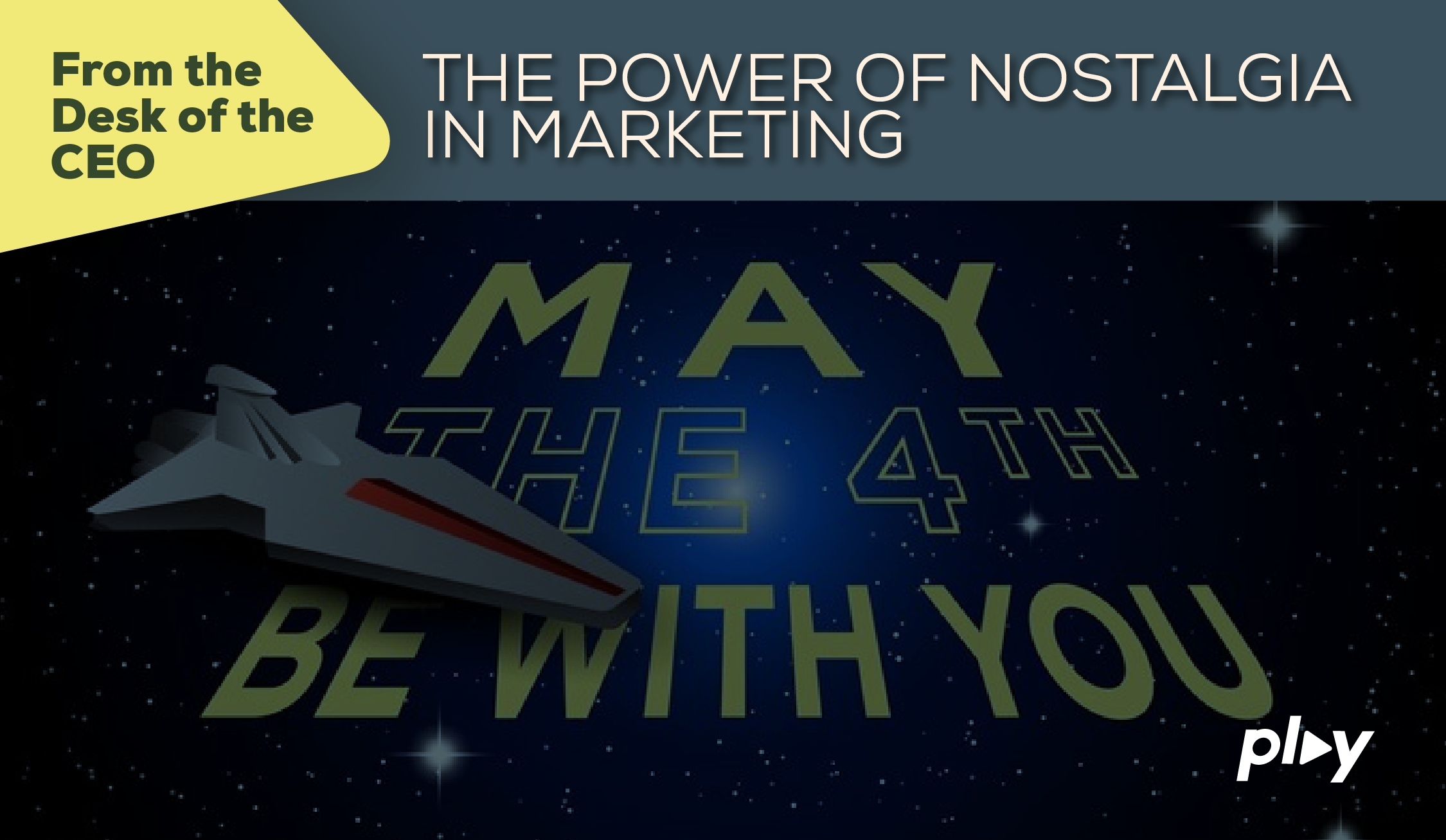The Power of Nostalgia in Marketing: How Star Wars Keeps Winning Over New Generations

I’ve seen a lot of marketing trends rise and fall like empires—some loud and brief, others slow-burning but forgettable. But few tools in our marketing arsenal are as enduring—and as underestimated—as nostalgia.
It’s the Death Star of emotional resonance. And Star Wars? It’s the blueprint for how nostalgia, handled with precision and imagination, keeps pulling in not just returning fans, but new generations of customers who weren’t even born when the original product launched.
As marketers, we should be paying attention—not just because it’s cool (though it is), but because it’s wildly effective.
I’ve seen a lot of marketing trends rise and fall like empires—some loud and brief, others slow-burning but forgettable. But few tools in our marketing arsenal are as enduring—and as underestimated—as nostalgia.
It’s the Death Star of emotional resonance. And Star Wars? It’s the blueprint for how nostalgia, handled with precision and imagination, keeps pulling in not just returning fans, but new generations of customers who weren’t even born when the original product launched.
As marketers, we should be paying attention—not just because it’s cool (though it is), but because it’s wildly effective.
Why Does Nostalgia Work So Well?
Let’s break it down with a bit of science.
Nostalgia lights up the brain like a well-placed lightsaber strike. Functional MRI scans show that when people experience nostalgia, it activates areas of the brain linked to reward, emotion, and memory—specifically the medial prefrontal cortex. In simple terms: we feel connected, rewarded, and even comforted.
According to research published in The Journal of Consumer Research, nostalgia makes people more willing to spend money. Why? Because they associate nostalgic stimuli with safety, identity, and warmth. It makes them feel like they’re buying more than a product—they’re buying back a part of themselves.
And this is where Star Wars shines.
Star Wars: A Masterclass in Generational Marketing
When Disney acquired Lucasfilm in 2012, many fans were skeptical. But Disney knew the formula: nostalgia + innovation = repeatable magic.
Let’s look at what’s happened since:
- $12 billion+ in box office revenue across all films
- $5.5 billion annually in merchandise sales
- One of the most watched franchises on Disney+, with “The Mandalorian” alone drawing in 40 million unique views in its first month
- And the kicker: 47% of Star Wars fans today are under the age of 30
Think about that. Nearly half the fanbase never saw the original trilogy in theaters. Yet they’re buying LEGO sets, streaming every spinoff, wearing Baby Yoda pajamas, and identifying as Jedi on dating apps.
What’s happening here isn’t just good storytelling—it’s long-tail, cross-generational branding that taps into the power of sentiment, legacy, and identity. It’s a brand raising its own next generation of customers.
What This Means for Your Brand
Okay, so you’re not George Lucas or Disney. You don’t have a billion-dollar IP, a lightsaber factory, or a CGI budget larger than most countries’ GDP. But here’s the good news: you don’t need to.
Nostalgia isn’t about Star Wars. It’s about emotion.
It’s about reminding your audience who they were—and who they’ve become—with your brand beside them.
Think about it:
- Are you a local hardware store? Highlight how generations of families have shopped there.
- Run a fitness brand? Show how the gear has evolved from ‘80s leg warmers to smart-tech performance, but the drive to improve never changed.
- In B2B SaaS? You’d be surprised how far a throwback to clunky ‘90s interfaces can go to show how far your product has come.
People don’t just buy products. They buy stories. And the story of how your brand fits into their personal history—that’s your goldmine.
A Word of Caution: Nostalgia Isn’t a Gimmick
Here’s where a lot of marketers get it wrong. Nostalgia isn’t a costume. It’s not slapping an old logo on a hoodie and calling it a campaign. It has to mean something.
Nostalgia is only powerful when it’s earned. When it reflects true connection, shared values, and emotional investment. Otherwise, it’s just retro wallpaper on a crumbling wall.
Star Wars succeeds because it balances two things: familiarity and freshness. It invites the old fans home—and it makes room for the new ones to feel like they belong, too.
So should you.
Final Thought: The Future of Marketing Is Rooted in Memory
Here’s what I tell our team at PLAY Creative all the time: data drives decisions, but emotion drives action.
And in a world where AI can write your ads, your competitors can copy your features, and attention spans are shorter than an Ewok’s temper—emotional resonance is what keeps you relevant.
Nostalgia is a bridge between generations. Between moments. Between brands and the people who carry them forward.
So go ahead. Dust off those old photos. Talk about your roots. Celebrate the legacy your brand is building—and invite your customers to be part of it.
Because in marketing, as in the Force, the past and the future are more connected than we think.
Want to talk about how to bring timeless storytelling into your brand strategy? Let’s connect. At PLAY, we believe in making emotional impact measurable—and memorable.
